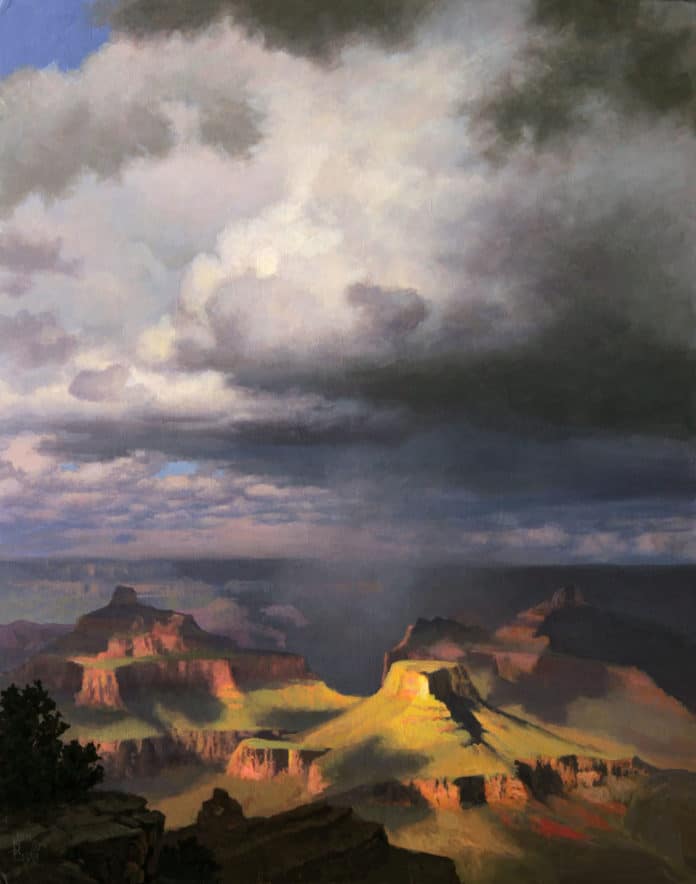
13 Dramatic Paintings of Storms > No stranger to painting directly from nature, J. M. W. Turner went to extraordinary lengths to capture its fury in “Snow Storm – Steam Boat off a Harbour’s Mouth.” As the story goes, the 64-year-old artist had sailors lash him to a steamship’s mast for four hours in the midst of a raging storm so that he could experience its effects firsthand and — if he survived — to record the scene later on canvas.
Today’s artists find similar inspiration in the dark skies, voluptuous cloud forms, and dramatic colors of storms. Although none of the artists featured here went to the extreme measures Turner did, all were driven to brave the elements to commit the scenes directly to their painting surfaces, make quick sketches or studies, or, as circumstances dictated for one, simply to burn the imagery into her memory to serve as inspiration as soon as she got to her easel.
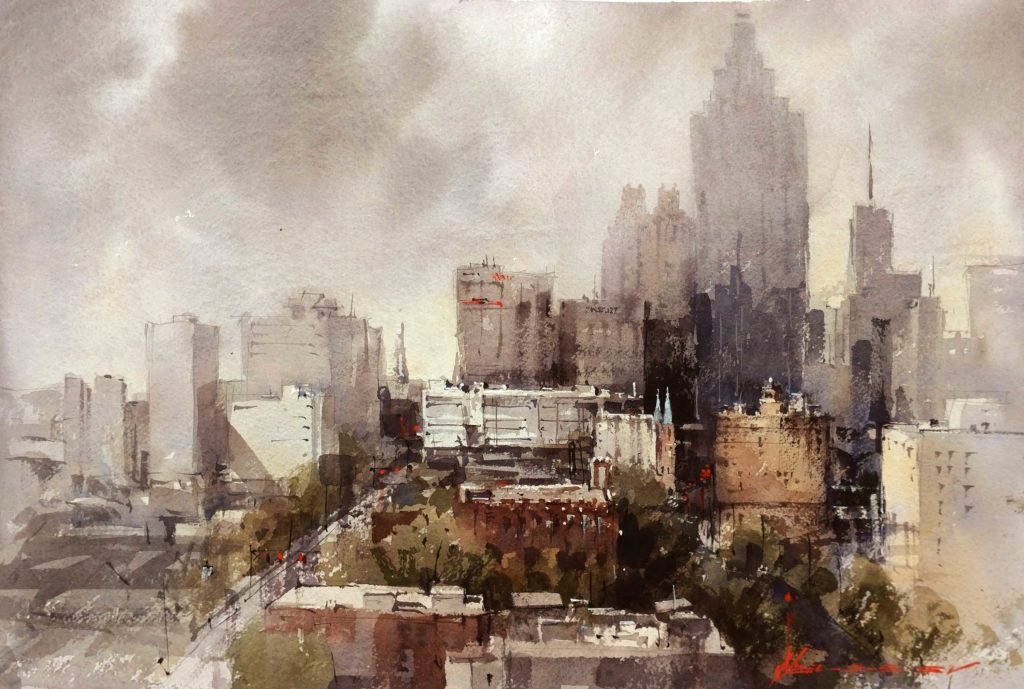
“I painted this scene during the 2017 Olmsted Plein Air Invitational in Atlanta, Georgia,” says Vladislav Yeliseyev. “Just before the event started, a fire caused a bridge to collapse on one of the most heavily traveled highways in the city. As if that wasn’t enough, a terrible storm rolled in one morning that had radio and television newscasters advising residents to take shelter with the threat of a tornado warning. That’s when I knew I needed to go out and paint.
“To paint carelessly on the street, however, would be too dangerous, so I arranged to paint the storm from the balcony of one of the local participants, a wonderful watercolorist named Kathy Rennell Forbes. There, from the 14th floor of her building, we executed a couple of paintings, treated to a fantastic view, which just does not happen every day. I’m always on the lookout for these types of weather conditions, because watercolor seems to have been created precisely for this kind of mood and dramatic color shifts.”
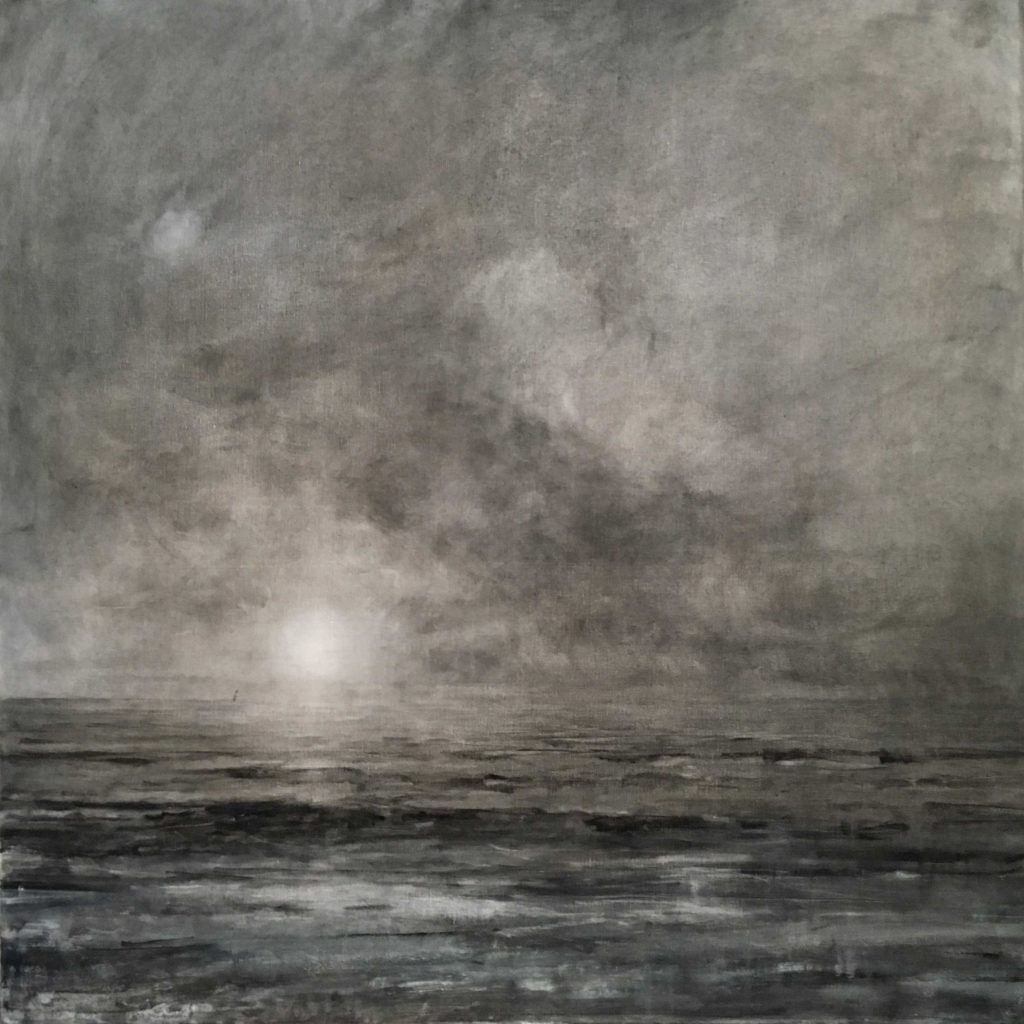
“Storm clouds are prominent in many of my paintings,” says Jill Basham. “I find them to be poetic, dramatic, and incredibly moving. In order for the clouds to take center stage, I often simplify the land or water below. I work to give the viewer a glimpse into the feelings that I get from what I see. I help to convey the mood with the level of energy I use to apply each brushstroke in the storm clouds. I’m fortunate to live on the Eastern Shore of Maryland, where the horizon line is quite flat, and storm watching and cloud painting are at their best.
“The high humidity of summer, as well as the warm and cold fronts of spring and fall, bring an endless supply of fantastic storm clouds and painting inspiration. Here, a storm is arriving that will soon cover the sun, which hangs low on the horizon. I worked in black and white, as I believe limiting the color palette can intensify the mood of a particular moment, as well as bring attention to form and design.”
(Read “My Little Painting” by Jill Basham here)
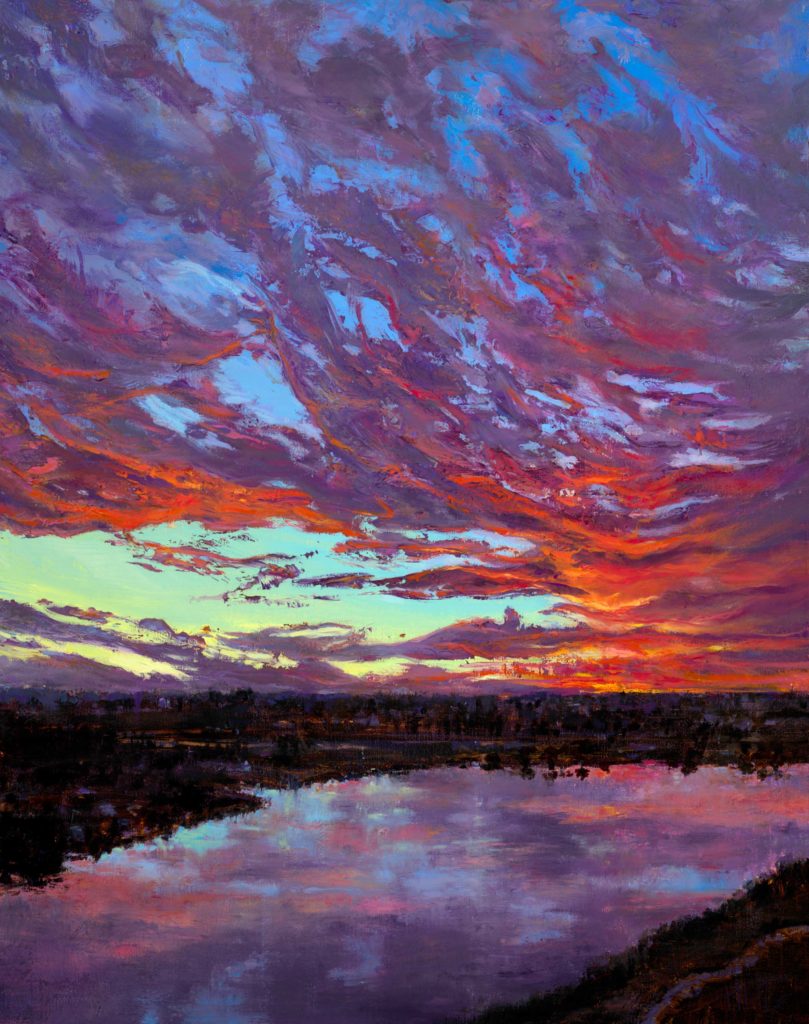
Just before dawn, her favorite time of day to paint, Karen Ann Hitt made multiple plein air studies to capture the vibrant color and dramatic light effects created by a fast-moving incoming cold front. “This day set a record cold temperature for us in Southwest Florida, dipping down to 32 degrees,” she says. “The sky appeared almost divided, a beautiful side effect of the cold front moving through. Photographs could not do justice to the vibrant colors lacing through the clouds as the sun neared rising.”
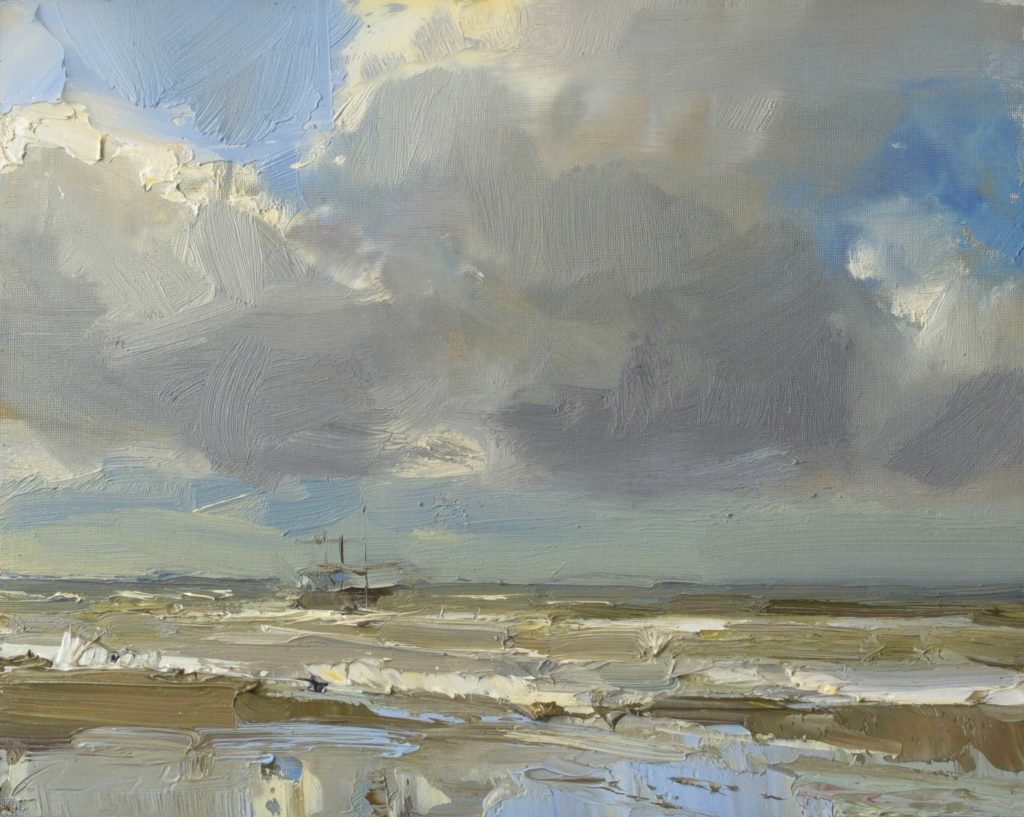
Collection the artist, Plein air
Paintings of Storms & How the Beach Is An Important Part of Life
“In Southern Holland, the beach is an important part of life,” says Roos Schuring. “The Dutch don’t fear a stormy day; they walk their dogs, fly kites, or go to the beach to enjoy the cold breeze and wild waves. In summer it’s a different story, but for 75 percent of the year, it can get cold, rough, and certainly not ‘ideal’ for painting outdoors. There’s a (good) chance for rain most of the time.
“Eventually, I got tired of watching weather forecasts to decide whether or not to go painting. I created a schedule and committed to going out no matter the circumstances. I’ve painted in the roughest of storms, slapped in the face a thousand times by my own jacket while working. I secure my easel with bags of sand, and staple the canvas to my easel. Of course, in a storm, a painting umbrella is useless.
I’ve found that the sky is at its best just before or just after the rain. If you’re home looking at it, gauging when to go out, you’re probably already too late to paint it. Just going is always better than waiting until the time is right. In order to catch these magnificent skies, you need to already be there. The window of opportunity comes and goes very quickly. It becomes a game. Can I catch it in time, or at all?”
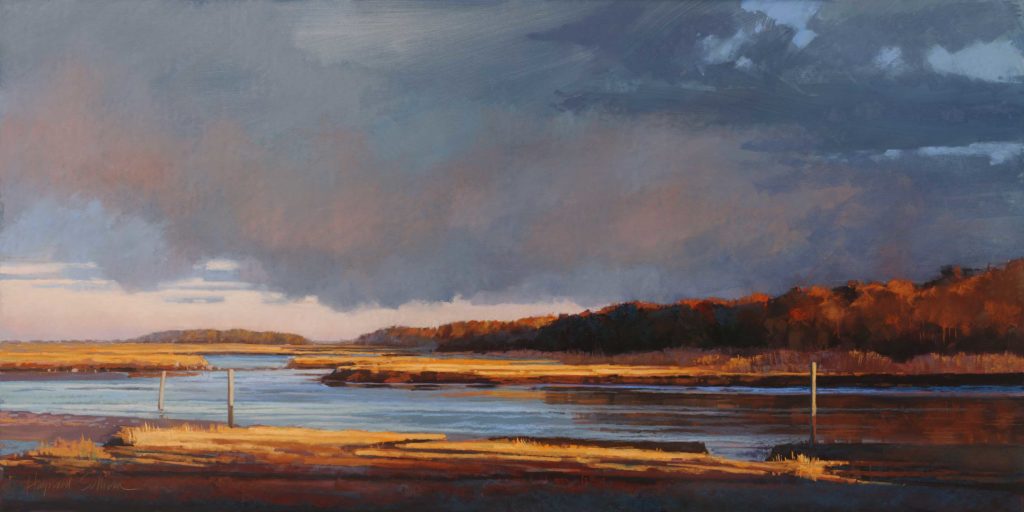
“Inspired by the New England marsh paintings of Martin Johnson Heade [American, 1819–1904], I set out to find the exact spot of one of the locations he was known to have painted on the South Shore of Boston, near where I live,” says Liz Haywood-Sullivan. “Using Google Maps to review the current marshes from above, I was able to pinpoint the man-made channels created a century ago to allow for boat access. In the 139-year gap between our paintings, the industry along the marshes and their rivers has changed from salt haying to recreational pursuits, but the essential geography and magnificent sky vistas remain timeless.
“Heade’s marsh paintings exhibit a number of consistencies that I incorporated into my painting. They are horizontal, usually 1:2 proportionally. The horizon line often sits at the lower third, so the paintings focus on a dramatic sky, which is often stormy. Occasionally, a peek of blue sky appears through the storm clouds at the very top of the picture plane.
“I did numerous sketches of this piece on location with a view of the marsh and the North River looking east toward the Atlantic Ocean, at the dramatic end of day. Although the iconic salt marsh haystacks are gone, I included mooring posts, a clue to the area’s past, which also served to add a contemporary vertical interest to the horizontal image.
“It’s interesting to note that Heade almost always painted the marshes at high tide. Today, these same marshes are often completely underwater at high tide. It makes you wonder if they will still be in existence to be painted 139 years from now.”
(Listen to Liz Haywood-Sullivan’s guest appearance on the PleinAir Podcast with Eric Rhoads here)
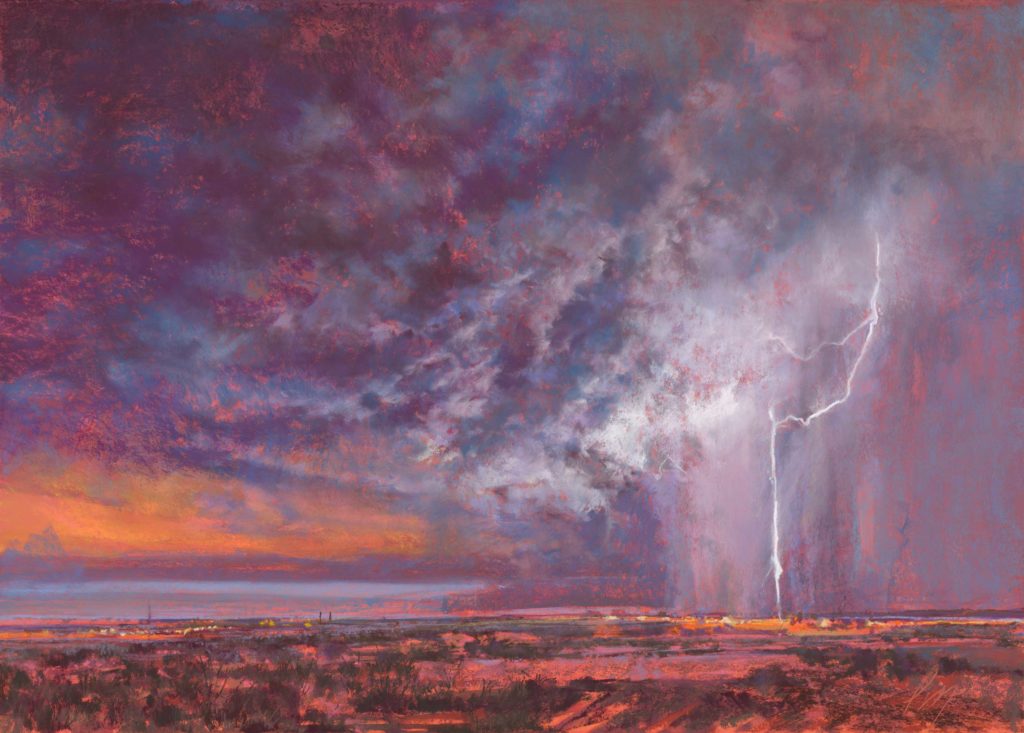
“I love painting tornadoes, lightning, and dust storms,” says Iva Morris. “I live in rural New Mexico, so I have plenty of opportunities to ‘explore’ extreme weather. I also cross the country once or twice a year and camp on the way. When translating these weather events into a two-dimensional painting in my studio, I start by preparing a textured surface — sanded paper on Gatorboard, covered in a ground of pastel and turpentine. I like to build up thin, transparent layers in order to create the dense atmosphere of dust, wind, and debris.
“The color of a stormy sky is also very fluid, with many layers of color and light playing off one another. In order to try and capture this event, I use water, alcohol, and an air compressor to manipulate the pastel, gouache, and watercolor. I hope that these materials will perform in unexpected ways, mimicking the texture and movement found in extreme storms. I painted this piece from memory, inspired by a violent storm I saw brewing on the West Mesa, while driving home from Albuquerque.”
Additional Paintings of Storms for Your Art Inspiration:
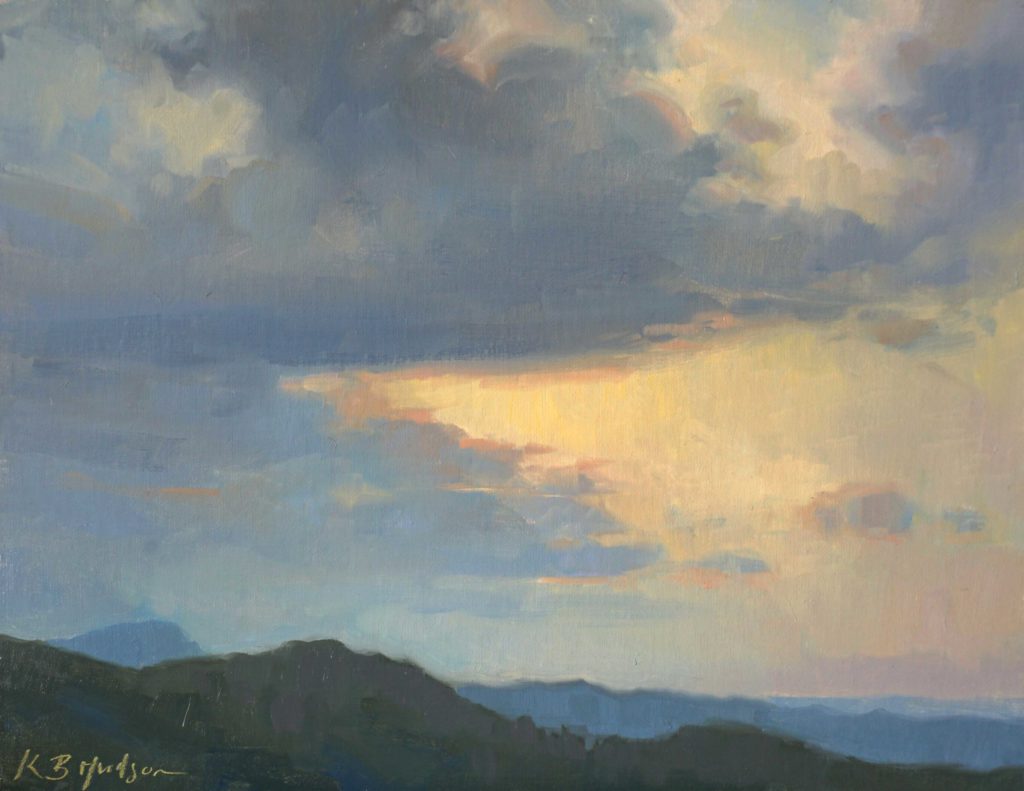
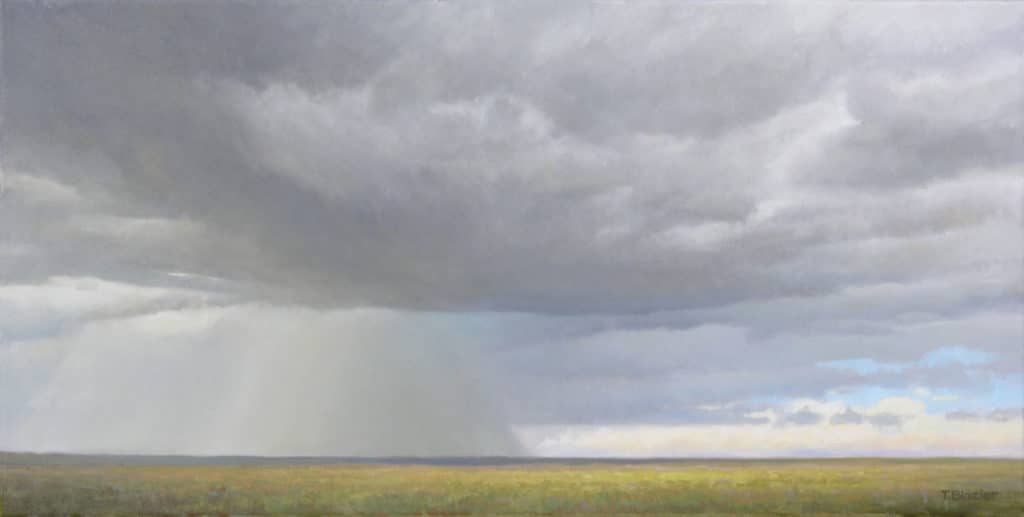
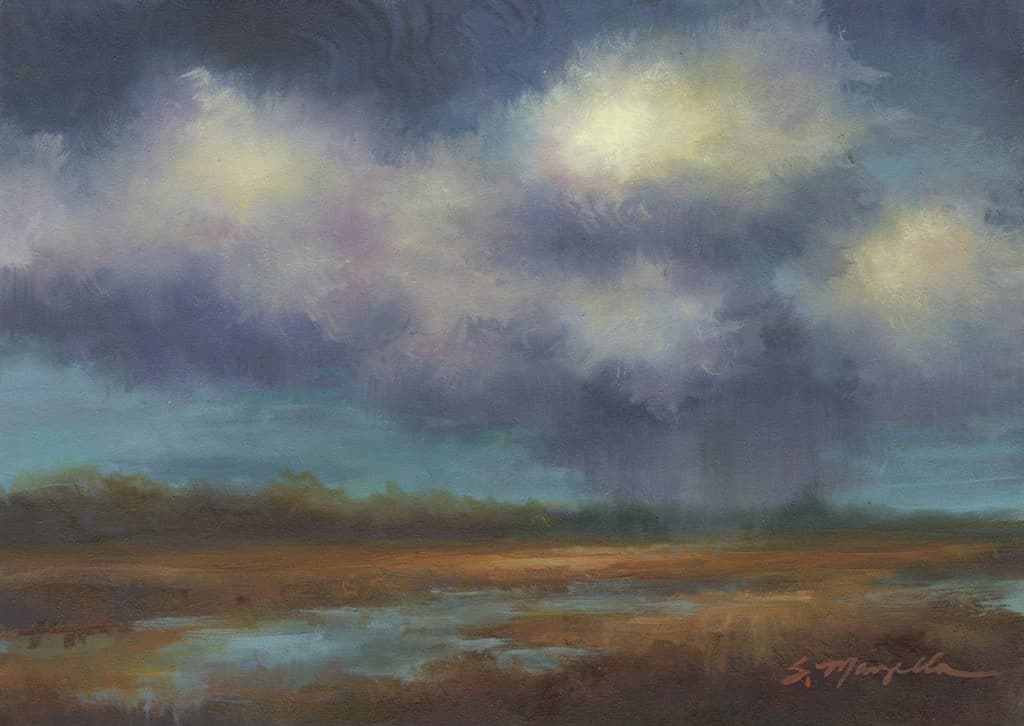
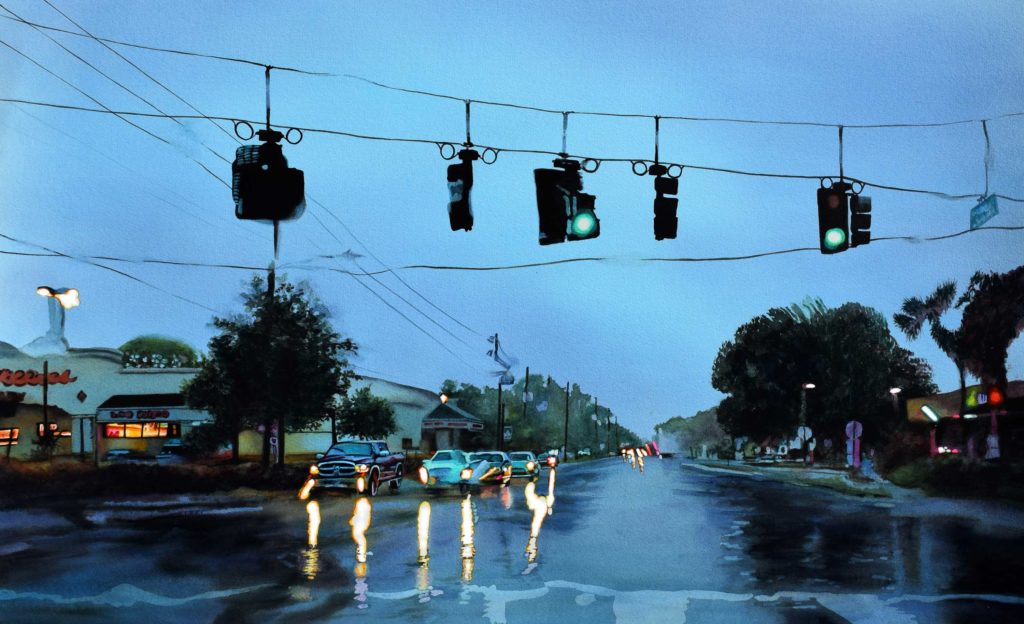
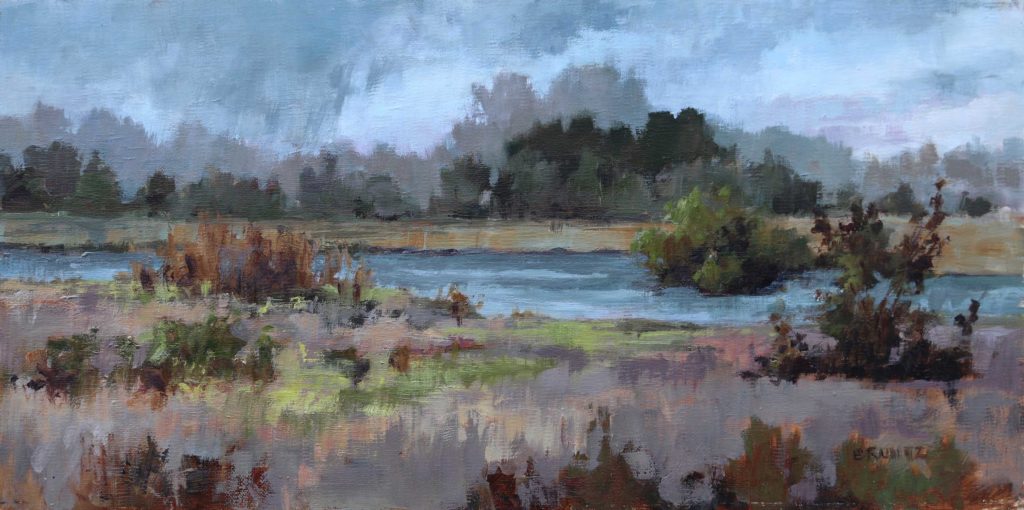
Plein air
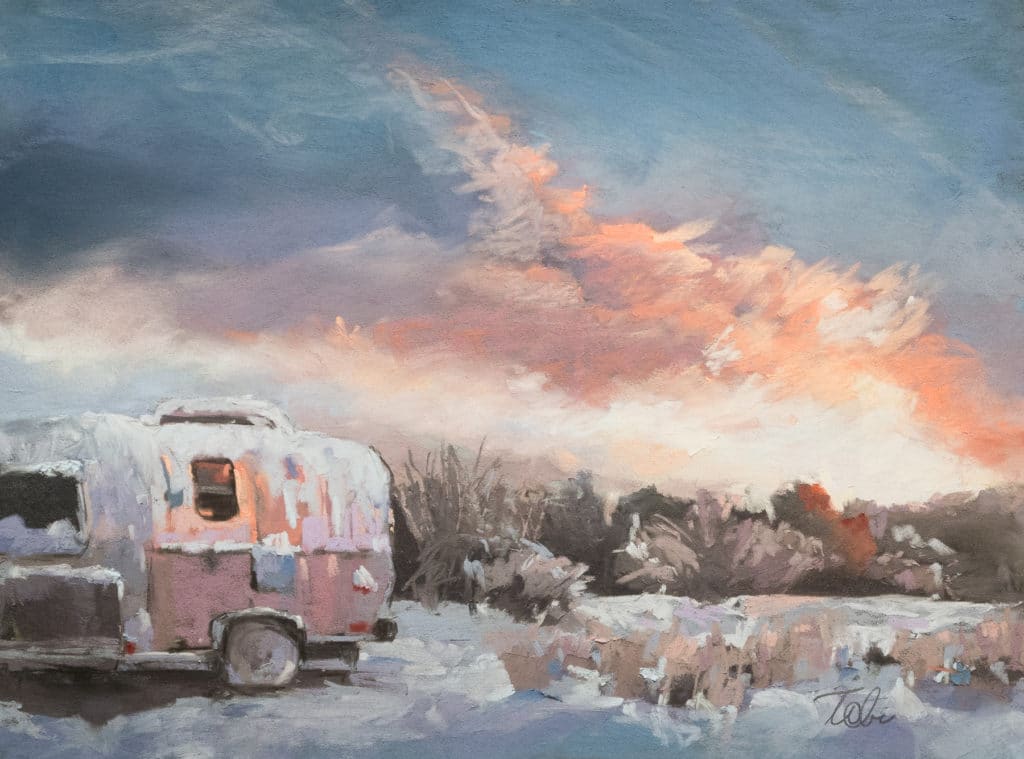
We hope you enjoyed this article about paintings of storms!
If you have a landscape painting (paintings of storms included!) that’s worthy of publication, enter it in the PleinAir Salon – the winning painting of the annual competition will appear on the cover of PleinAir Magazine!


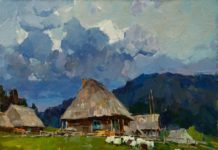
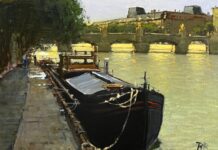
I have painted plein air near tornadoes, a water spout, tropical depressions, in the eye of a hurricane and in winter snow storms. So many events have had severe weather alerts and rain that it has become the responsibility of the plein air competition artist to have inclement weather painting skills.
Please also see oils of storms by Amy Marx.